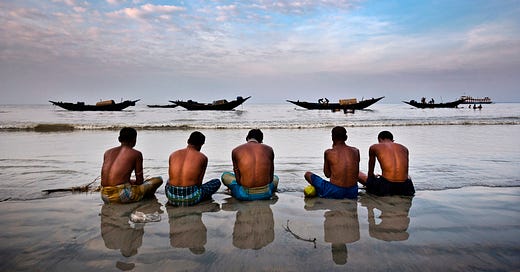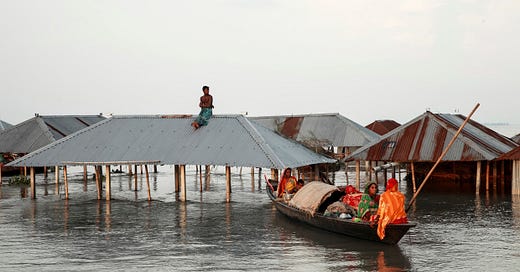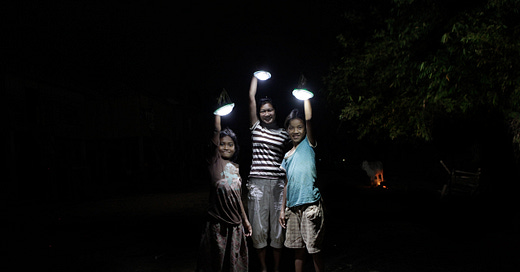
Discover more from Moving climate: a newsletter on migration and climate change
Just because people feel threatened by climate-driven migration doesn't mean they are
New polling puts climate-driven migration at the top of the public's fear list. But policy should not be shaped by public fear of migration.

A new poll has asked people across the world to rank how worried they are about security threats ranging from terrorism, economic crises, and killer robots. The poll also asked about how threatened people feel by climate-driven migration. Globally, the security threat posed by climate-driven migration ranks fifth in a list of over thirty potential security risks. (In fact, of the top five perceived security risks, four of them are connected to climate change.)
But just because people feel like climate-driven migration is a security threat, does not mean that it actually is. Feeling threatened and actually being at risk are very different things.
I'm cynical about how this data will be used to tell a new story about the policies we need. I suspect it will be leapt on by some to claim that because people feel climate migration is a security risk, it must be acted on as a security risk.
Several dangerous and racist narratives already exist connecting climate migration and security. My fear is that this data will be used to justify security and military responses to climate-driven migration and displacement.
The first narrative goes something like this: Climate change will force people to move. As those people move, they will stretch the resources of the new locations they arrive in. Resource conflicts will erupt. Those violent conflicts then threaten the interests of developed countries, who may need to intervene militarily to "stabilise" the situation. That's a crude version of the story, but you get the idea.
The second one goes like this: Climate change will make some areas harder to live in. As this happens, people will leave these areas in the global south and head for Europe. This taps into anti-immigrant sentiment and existing racist tropes about the connections between migration and terrorism.
Both narratives are deeply problematic and very colonial. (If you want a deep dive into the colonial dimensions of the climate and security discourse, then read this paper by Prof. Ayesha Siddiqi.)
Over the last decade, both these narratives have been deployed extensively by politicians in wealthy northern countries who are keen to act on climate change, but need to find a suitably terrifying narrative to convince their electorates. (John Kerry has been one of the worst culprits for this.)
These narratives have also been deployed by campaigners and activists hoping that a narrative based on security, conflict, and terrorism will kickstart faster action from high-emitting governments.
So, what does this new poll tell us?
Firstly, there is a lot of work to do in taking apart these dangerous narratives. In the global north, concern about security and terrorism is so prevalent that it has become the default framing of climate-linked migration for many people. Securitised narratives about climate-driven migration have already found a foothold in the public's imagination.
Tackling these narratives means telling an accurate story about climate-driven migration. It means constantly reminding the world that most climate-driven migration is short distance and internal. It means reminding people that most people displaced by climate-driven disasters return home. It means telling people there is no evidence connecting migration and displacement with the spread of armed conflict. (In fact, it's the other way around).
Tackling these security narratives also means making sure we have humane narratives about the connections between climate and migration. The idea of migration as a form of climate adaptation is a compelling candidate. In this narrative, migration becomes a powerful tool for some people to cope with the changing climate.
Subscribe to Moving climate: a newsletter on migration and climate change
Climate change holds the power to reshape patterns of migration and displacement. This is a newsletter about what that means.











